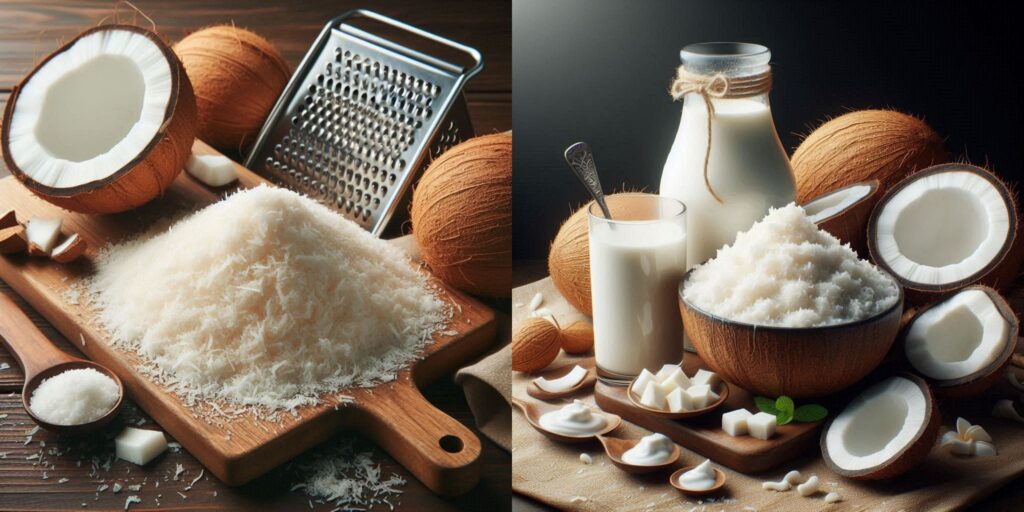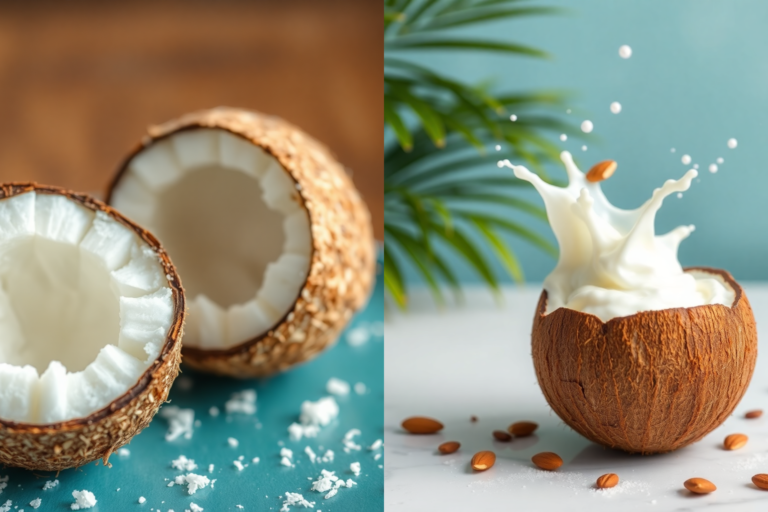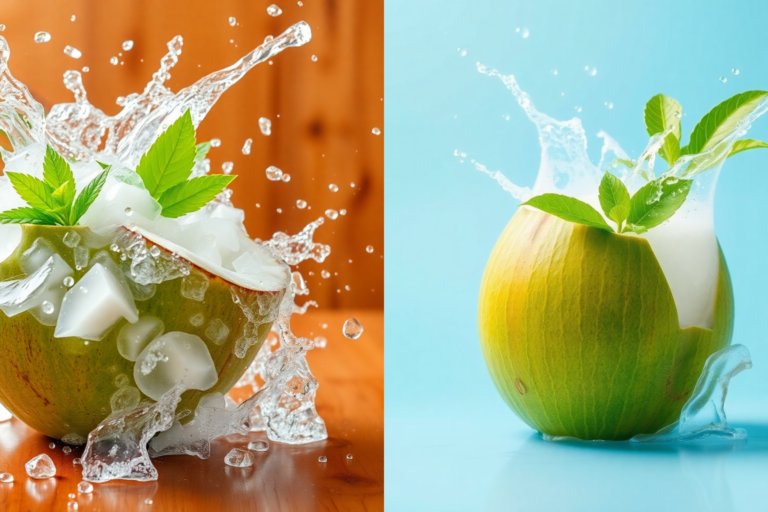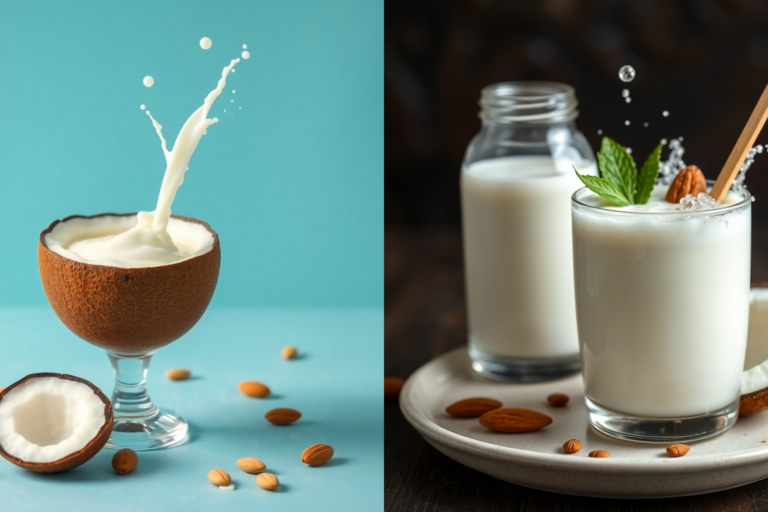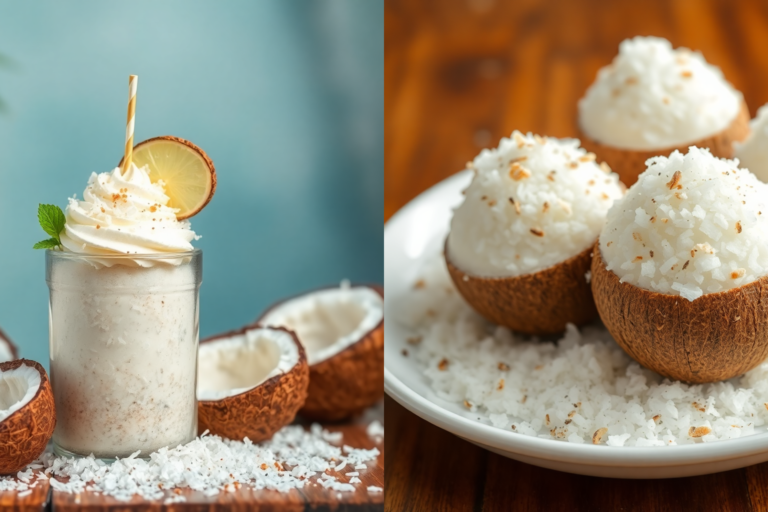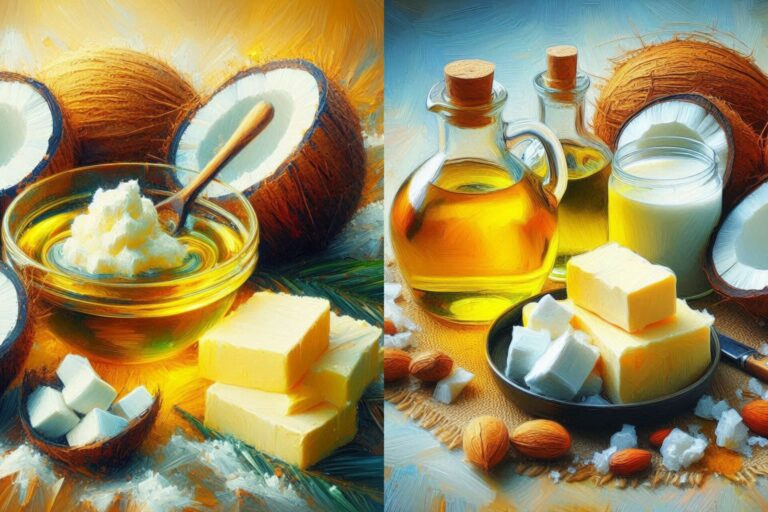Introduction to Desiccated Coconut and Its Culinary Uses in Baking
Desiccated coconut, derived from the dried, unsweetened meat of mature coconuts, is a versatile ingredient widely appreciated for its rich flavor and texture. Commonly used in baking and cooking, desiccated coconut adds a distinct tropical twist to various recipes, from cakes and cookies to curries and desserts.
Importance of Incorporating Desiccated Coconut in Baked Goods
Incorporating desiccated coconut into baked goods not only enhances their flavor profile but also introduces numerous health benefits. This versatile ingredient not only imparts a delightful coconutty taste but also contributes significantly to the nutritional value of baked treats.
1. Rich in Dietary Fiber
Desiccated coconut is notably rich in dietary fiber, essential for maintaining digestive health and promoting regular bowel movements. A diet high in fiber aids in controlling blood sugar levels and reducing cholesterol, making desiccated coconut an excellent choice for those looking to improve their overall digestive well-being.
2. Boosts Energy Levels
Due to its high content of healthy fats, including medium-chain triglycerides (MCTs), desiccated coconut serves as an immediate energy source. This makes it an ideal snack for athletes and active individuals seeking quick and sustained energy boosts throughout their day.
3. Supports Heart Health
The presence of MCTs in desiccated coconut not only boosts energy but also supports heart health by potentially improving cholesterol levels. Regular consumption of desiccated coconut as part of a balanced diet may contribute to reducing the risk of cardiovascular diseases.
4. Enhances Immune Function
Desiccated coconut is rich in antioxidants and possesses natural antimicrobial properties, which can help strengthen the body’s immune system. Including desiccated coconut in your diet may contribute to better overall immune function and provide protection against oxidative stress.
5. Promotes Healthy Skin and Hair
The nutrient-rich profile of desiccated coconut, including vitamins and minerals like vitamin E, promotes healthy skin and hair. Regular consumption can help maintain skin elasticity, hydration, and strengthen hair follicles, making it a popular ingredient in natural beauty and skincare products.
Moisture Retention with Desiccated Coconut
Use of Desiccated Coconut in Moisture Retention
When used in baking, Desiccated Coconut absorbs and holds onto moisture, preventing cakes, muffins, and breads from drying out. It adds a subtle coconut flavor and a moist crumb that enhances the overall quality of the baked product.
Tips for Adjusting Recipes
- Incorporating Desiccated Coconut: Replace a portion of flour with desiccated coconut to improve moisture without compromising texture.
- Hydration Balance: Adjust liquid ingredients slightly when adding desiccated coconut to maintain the desired consistency.
- Baking Time: Monitor baking time carefully to ensure that the added moisture from desiccated coconut does not affect the overall baking process.
Optimizing Moisture Content
- Even Distribution: Mix desiccated coconut evenly into the batter to distribute moisture uniformly throughout the baked goods.
- Texture Enhancement: Experiment with different forms of desiccated coconut (fine or medium) to achieve the desired texture in your recipes.
- Storage Benefits: Enjoy prolonged freshness and improved texture in baked goods by including desiccated coconut in your recipes.
Conclusion
Harnessing the moisture-retaining properties of desiccated coconut can elevate your baking endeavors. Whether you’re making cakes, cookies, or bread, integrating desiccated coconut ensures moist, flavorful results that delight with every bite. Adjust your recipes with confidence, knowing that desiccated coconut not only enhances moisture retention but also enriches the taste and texture of your baked creations.
Flavor Enhancement with Desiccated Coconut
Enhancing Flavor Profiles
Desiccated coconut enriches dishes with its pronounced yet subtle sweetness. This makes it a perfect complement to both savory and sweet recipes, offering a unique tropical flair that appeals to many palates. When toasted, Desiccated Coconut develops a nutty undertone, further intensifying its flavor profile.
Pairing with Other Flavors
The versatility of Desiccated Coconut extends to its ability to harmonize with a wide range of flavors. It pairs exceptionally well with rich chocolate, creating a decadent combination of textures and tastes. When mixed with fruits like bananas or pineapples, Desiccated Coconut adds a tropical twist that enhances the overall freshness of desserts or breakfast bowls. Additionally, it can be mixed with nuts such as almonds or macadamias, providing a satisfying crunch and enriching the nuttiness of various recipes.
Desiccated Coconut in Baking
In baking, Desiccated Coconut is a beloved ingredient for its ability to moisten cakes, cookies, and bread while imparting a delicate coconut flavor. Its texture adds a delightful chewiness to baked goods, making them more indulgent and enjoyable.
Desiccated Coconut as a Topping
As a topping, Desiccated Coconut adds visual appeal and a delightful crunch to dishes. Sprinkled over yogurt, oatmeal, or salads, it enhances both the texture and taste of the dish, making it more satisfying and wholesome.
Enhancing Texture and Crunch with Desiccated Coconut
Utilizing Desiccated Coconut for Texture and Crunch
In baking, achieving the perfect texture and crunch often relies on the inclusion of desiccated coconut. Here are techniques to effectively incorporate it into cookies, cakes, and bars:
1. Incorporating Desiccated Coconut in Cookies
Desiccated coconut adds a delightful chewiness and texture to cookies. For classic chocolate chip cookies, consider substituting a portion of the flour with desiccated coconut. This not only enhances the texture but also imparts a subtle coconut flavor that complements the sweetness of the chocolate.
2. Enhancing Cakes with Desiccated Coconut
When baking cakes, desiccated coconut can be added to the batter to introduce a pleasant crunch and moisture. For coconut cakes, using both desiccated coconut within the batter and sprinkling it on top before baking creates a multi-dimensional texture that is both fluffy and satisfyingly crunchy.
3. Creating Crunchy Bars with Desiccated Coconut
In bars and granola recipes, desiccated coconut serves as a key ingredient for achieving a crispy, crunchy texture. Mix it with oats, nuts, and honey or maple syrup before baking to create bars that are not only nutritious but also packed with a rich coconut flavor and satisfying crunch.
Techniques for Achieving Desired Textures
Toasting Desiccated Coconut: Toasting enhances the nutty flavor and crunch of desiccated coconut. Spread it evenly on a baking sheet and bake in a preheated oven at 325°F (160°C) for about 5-10 minutes, stirring occasionally, until golden brown.
Blending and Processing: For recipes where a finer texture is desired, pulse desiccated coconut in a food processor or blender until it reaches the desired consistency. This is ideal for incorporating into frostings, fillings, or as a coating for truffles and candies.
Substitution and Versatility of Desiccated Coconut
Desiccated Coconut, known for its fine texture and rich flavor, serves as a versatile ingredient in cooking and baking. Here’s how you can substitute Desiccated Coconut for other ingredients like flour or nuts, along with tips for adjusting baking times and temperatures.
Substituting Desiccated Coconut for Other Ingredients
Desiccated Coconut can be a great substitute for flour or nuts in various recipes, offering a unique twist and added health benefits. When substituting:
Flour: Replace up to 25% of the flour with Desiccated Coconut to enhance texture and flavor. This substitution works well in cookies, cakes, and muffins, adding a subtle coconut aroma.
Nuts: Substitute chopped nuts with Desiccated Coconut in recipes to cater to nut allergies or preferences. It adds a similar crunch and richness to baked goods and salads.
Tips for Adjusting Baking Times and Temperatures
When using Desiccated Coconut in baking, consider the following tips to ensure optimal results:
Baking Times: Due to its moisture-absorbing properties, Desiccated Coconut can affect baking times. Monitor your baked goods closely and adjust the baking time accordingly. Increase the baking time slightly if the recipe becomes denser or more moist.
Temperature Adjustments: Since Desiccated Coconut browns quickly, lower the baking temperature by about 25°F (approximately 15°C) compared to recipes using other ingredients. This adjustment helps prevent over-browning while ensuring even baking.
Incorporating Desiccated Coconut in Recipes
Experiment with Desiccated Coconut in various recipes to explore its versatility:
Cookies: Add Desiccated Coconut to cookie dough for a chewy texture and coconut flavor.
Cakes: Use it in cake batters for a moist crumb and delightful coconut essence.
Granola: Mix Desiccated Coconut with oats and honey before baking for a crunchy, coconut-infused granola.
Decorative Uses of Desiccated Coconut
Utilizing Desiccated Coconut for Decorative Purposes
In the realm of cake decorating, desiccated coconut offers a natural and visually appealing option. Sprinkling desiccated coconut over frosted cakes and cupcakes instantly transforms them into tropical delights. The snowy-white texture of desiccated coconut contrasts beautifully against colorful frostings, creating a visually striking presentation that is both enticing and appetizing.
Creative Ways to Incorporate Coconut Flakes into Baking Presentations
Coconut Snow
- Use desiccated coconut to simulate a snowy effect on winter-themed cakes. Sprinkle generously over a frosted surface to create a festive and seasonal look.
Tropical Paradise
- For tropical-themed desserts, such as coconut cakes or piña colada cupcakes, lightly toast desiccated coconut and sprinkle it over the frosting. This adds an authentic coconut flavor and enhances the theme of your dessert.
Textured Toppings
- Mix desiccated coconut with other toppings like chopped nuts or chocolate shavings to create a textured topping for cakes and cupcakes. This not only adds visual interest but also enriches the flavor profile.
Crusts and Coatings
- Use desiccated coconut as a coating for cake pops or truffles. Its fine texture adheres well to melted chocolate or frosting, providing a delightful crunch and coconut flavor with every bite.
Edible Landscapes
- Create edible landscapes or beach scenes on cakes by using desiccated coconut as sand. Combine with blue icing to simulate water, and add edible decorations like umbrellas or palm trees for a whimsical touch.
Conclusion
Desiccated coconut is more than just a baking ingredient; it’s a creative tool for enhancing the visual appeal and flavor of desserts. Whether used as a simple sprinkle or integrated into complex designs, desiccated coconut adds a touch of tropical charm to any baked creation. By exploring these creative uses, you can elevate your baking presentations and delight your guests with visually stunning and delicious treats adorned with the natural beauty of desiccated coconut.
